In our expert flamingo guide learn all about these graceful and colourful birds, including how to identify each species of flamingo, their diet and best places to see them in their natural habitat.
Where does the word 'flamingo' come from?
The word ‘flamingo’ is said to come from the Spanish word ‘flamenco’ meaning fire, which refers to the bright pink or orange colour of the feathers.
How many species of flamingo are there?
There are six flamingo species, including the greater flamingo, Chilean flamingo, lesser flamingo, Caribbean flamingo, Andean flamingo and puna flamingo.
What are the species of flamingo?
Greater flamingo
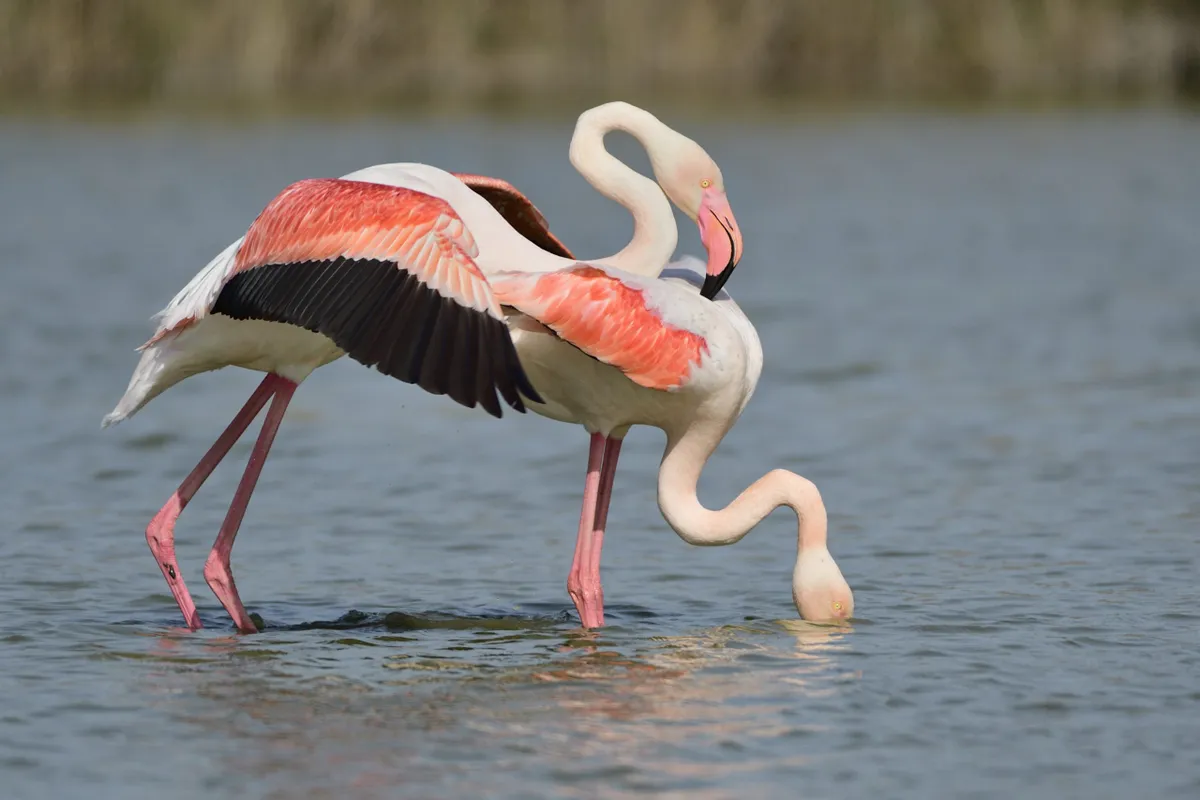
Chilean flamingo
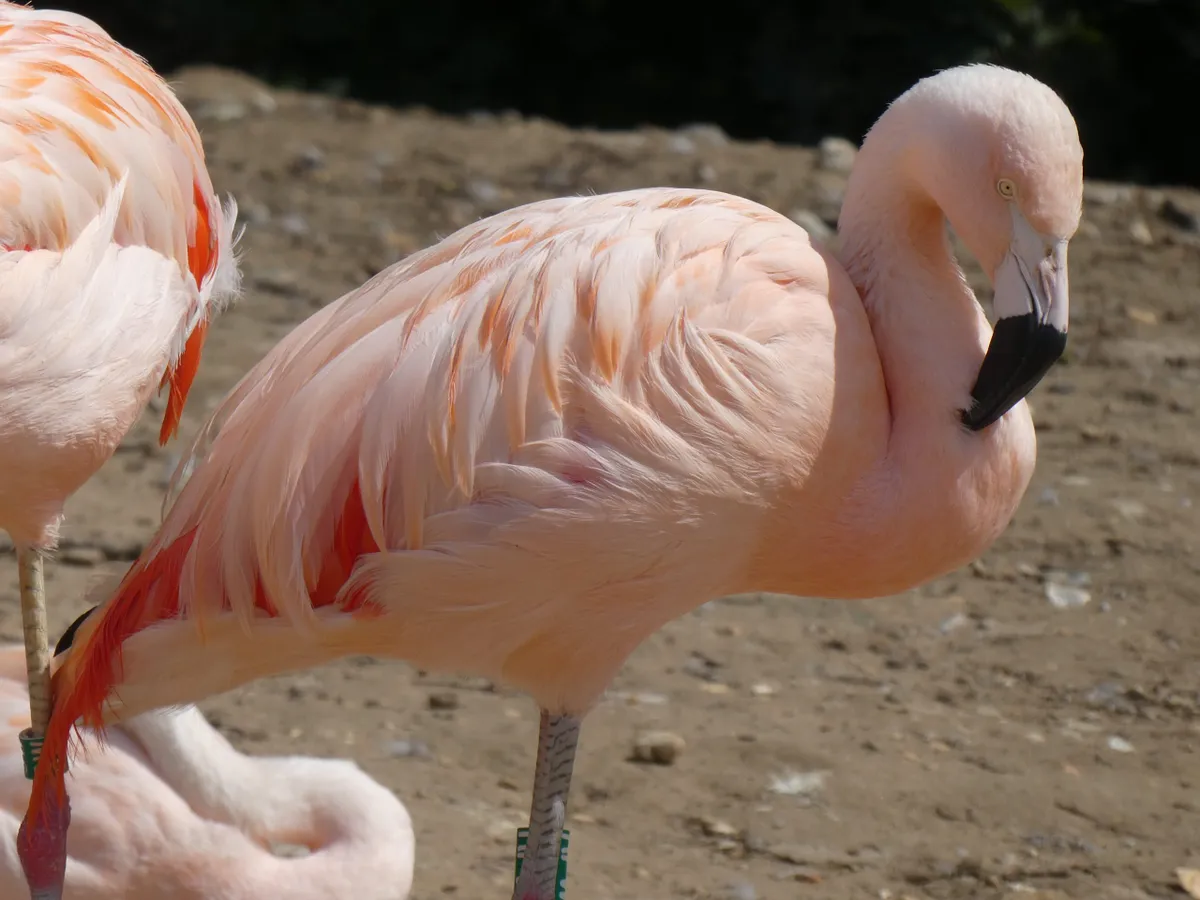
Lesser flamingo
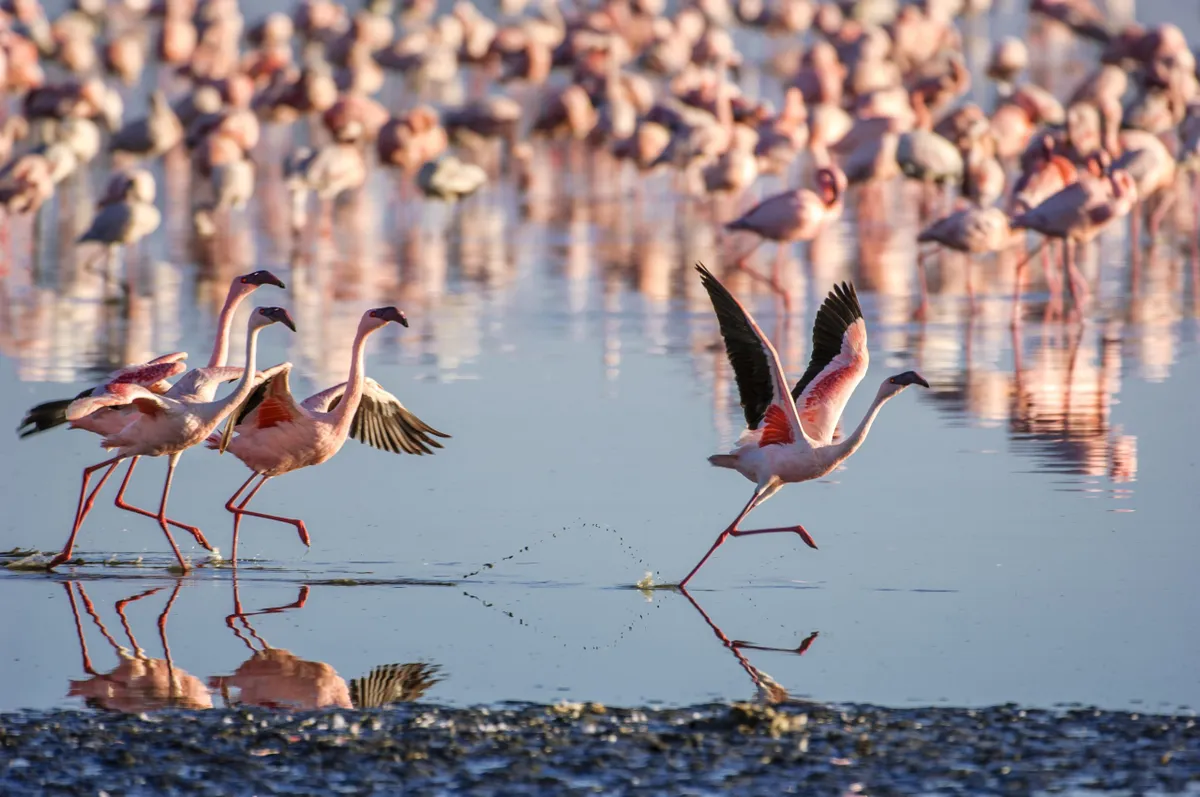
Caribbean flamingo
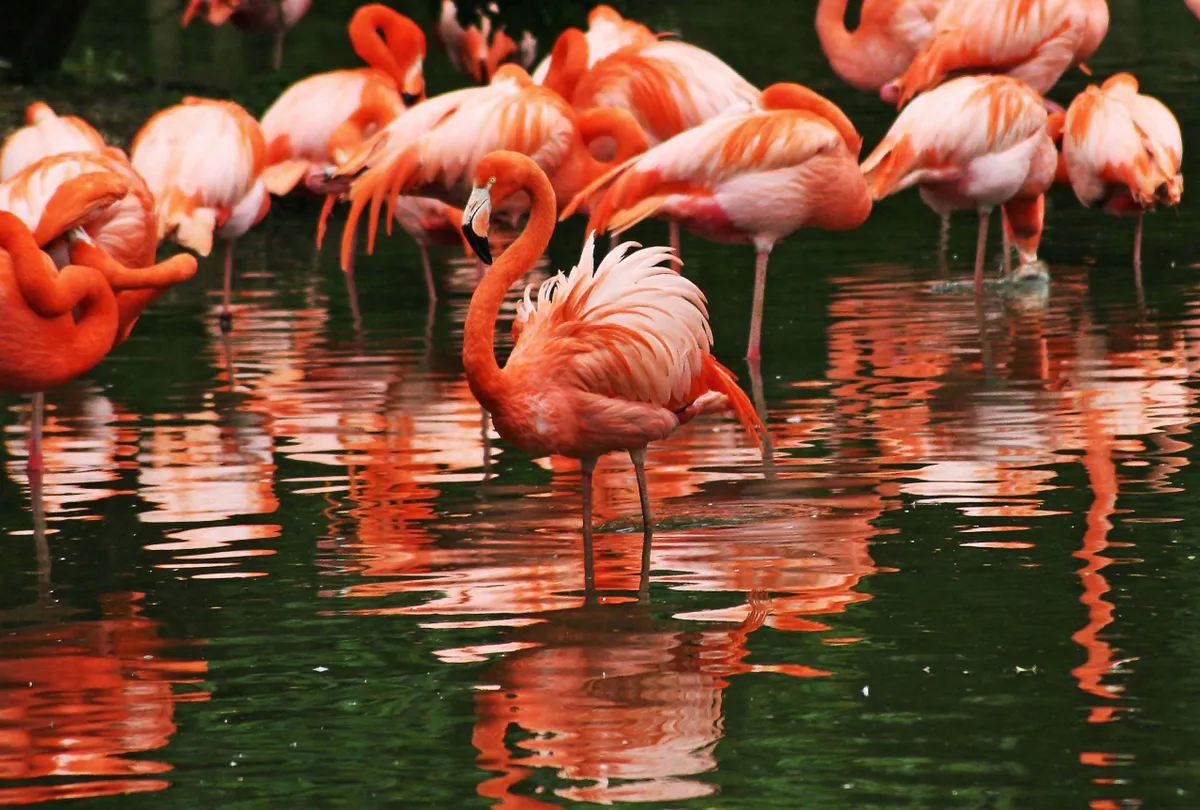
Andean flamingo
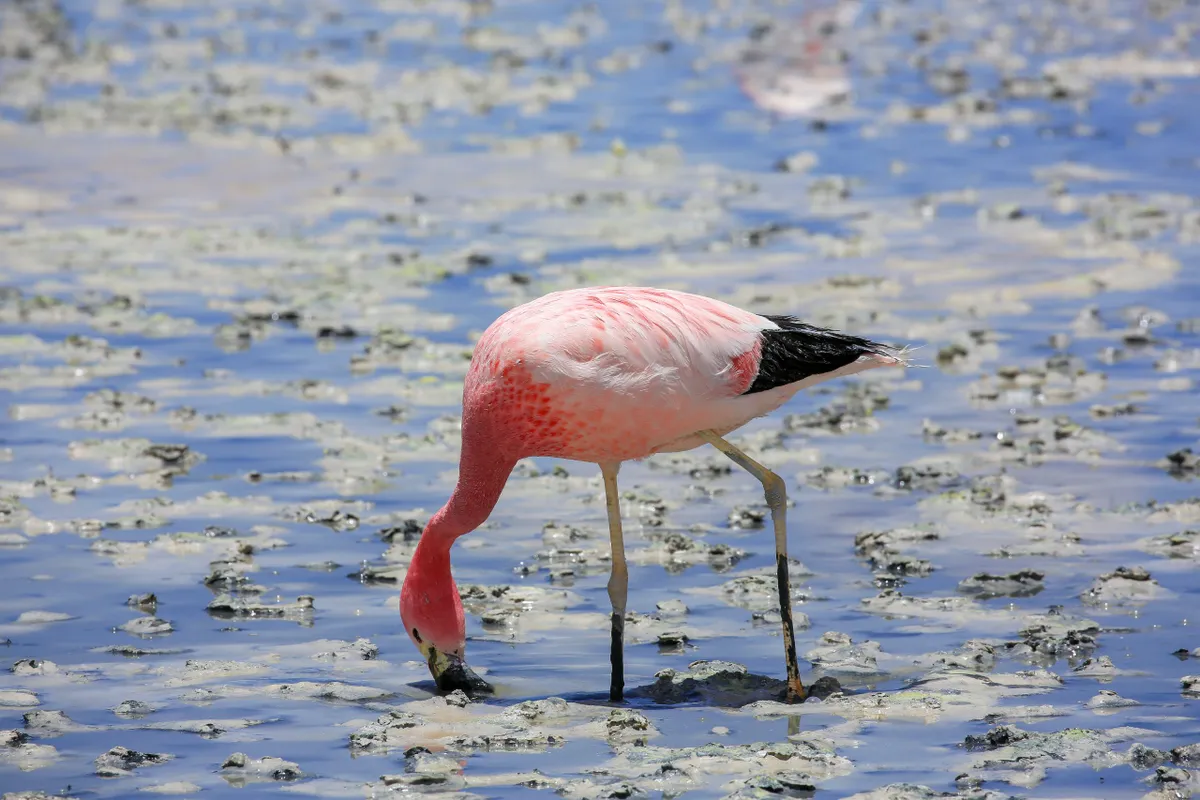
Puna flamingo
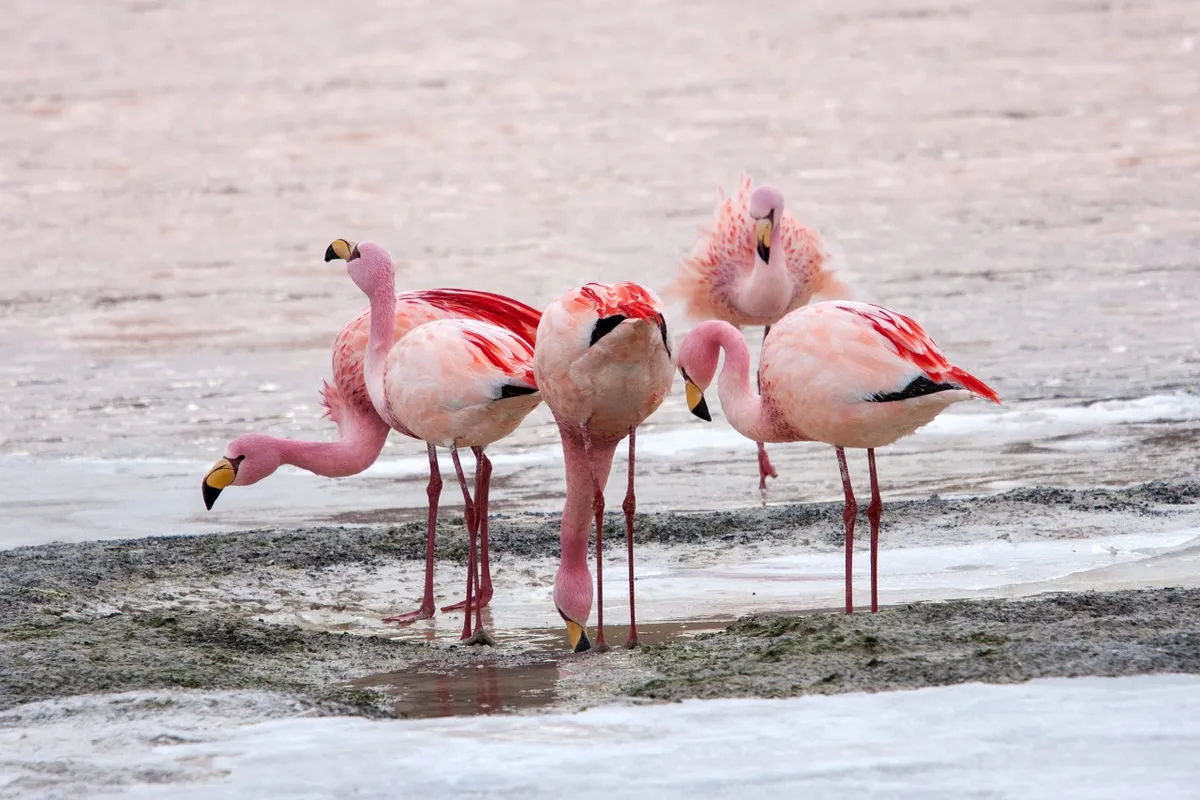
Why are flamingos pink?
The bright colour of flamingo feathers is caused by the presence of carotenoid pigments found in the algae and crustaceans that make up the diet of a flamingo.
Tales of blue flamingos are completely false, but a single black flamingo has been seen. It's not a new species, and it's been spotted twice - once in Israel and once in Cyprus. They could be different birds, but some experts think it's the same individual. The cause is excess melanin being produced by the flamingo, which is a condition occasionally seen in other birds as well.
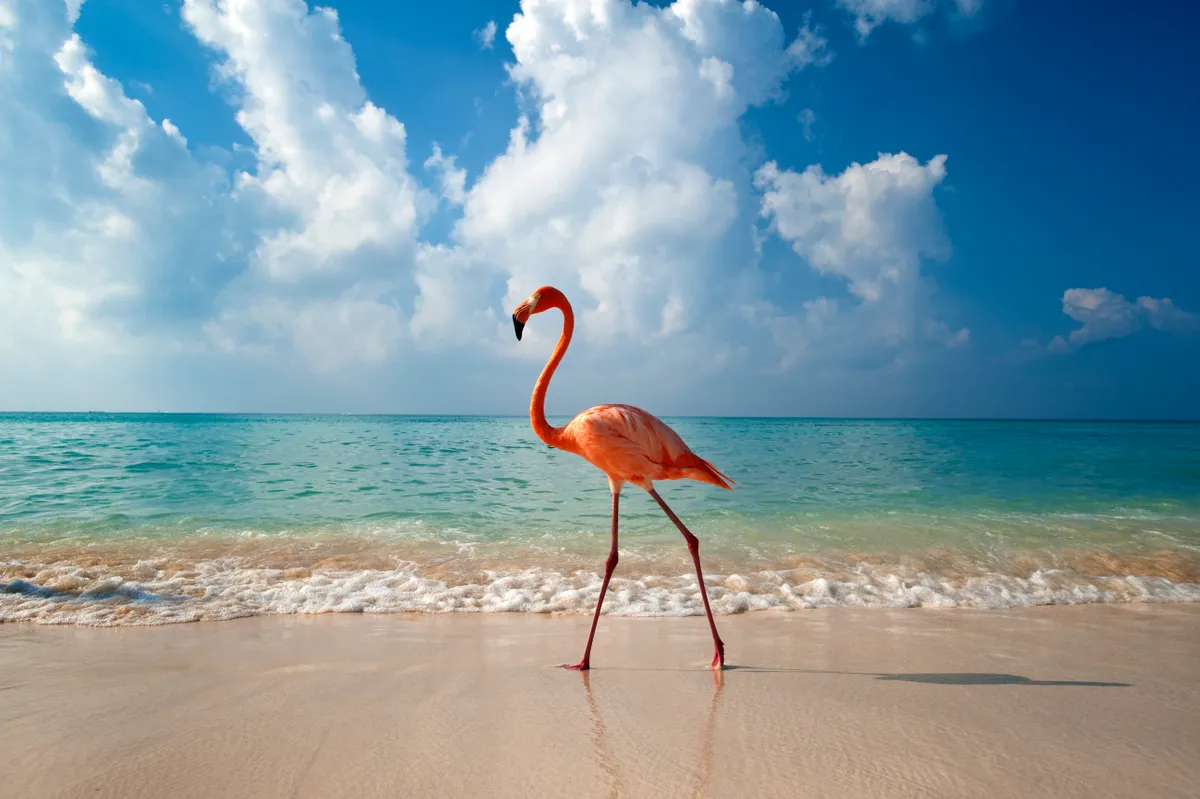
Pink is power
The pinkest birds have the highest status in the colony as the bright colour shows that a particular individual is strong and good at finding food resources.
During a colony’s breeding time, a high ranking individual will influence the rest of the flock to breed by changing its feather colour to a deeper pink, kick-starting the breeding rituals.
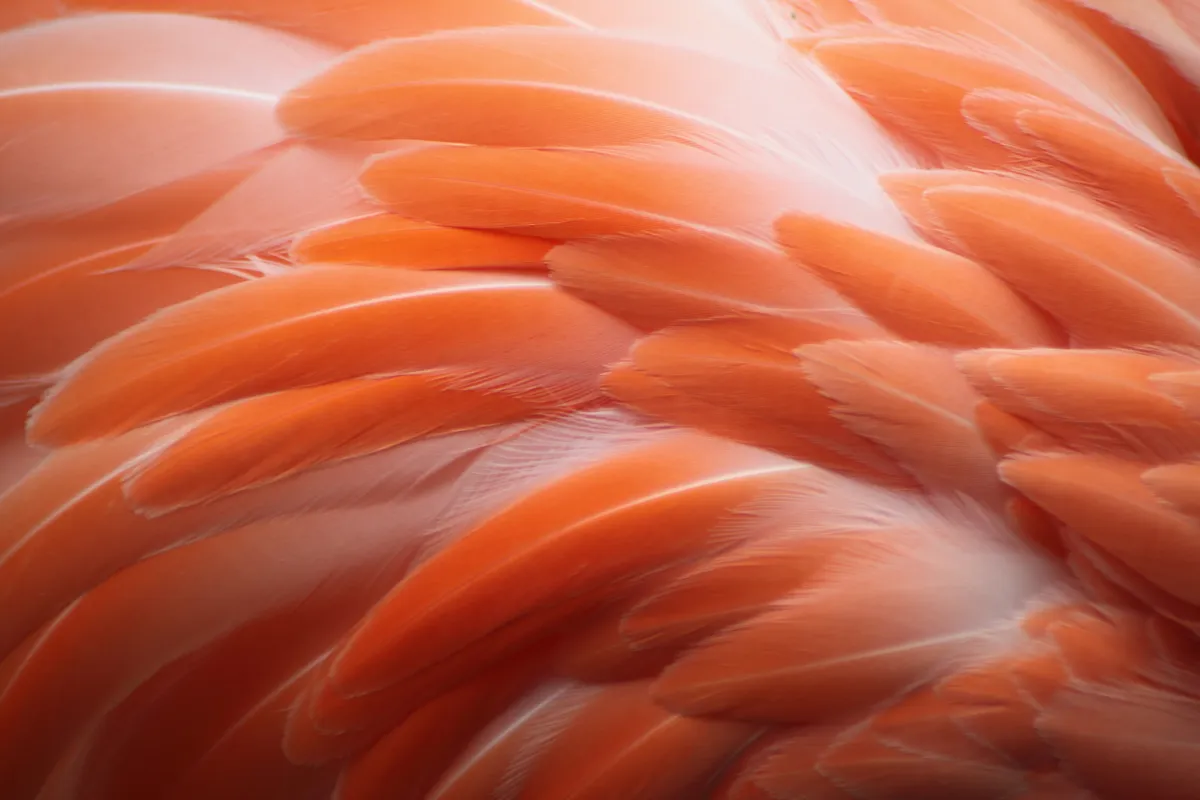
Is it just a flamingo’s feathers that are pink?
No – flamingos are pink on the inside, too. These flamboyant birds are adapted to collect and metabolise carotenoid pigments – the chemicals found in algae, crustaceans and microscopic plant materials that form tones of orange, red, yellow and pink.
Though the pink coloration is most obvious in a flamingo’s plumage, the carotenoids also impregnate the bird’s tissues, skin, blood and even egg yolk. Flamingos are among a select few birds that feed their young directly from a secretion produced in their crop (throat), and even this ‘crop milk’ is bright pink. Interestingly, so much carotenoid is taken up by their eggs and crop milk that by the end of a breeding season parents of both sexes have lost the pink colouring from their feathers and appear almost white. Scientists have found that the blood biochemistry of each of the six flamingo species varies, with different species seeking specific types of carotenoid. This accounts for the range of hues. Paul Rose
Are flamingos born pink?
Both parents feed their chick blood-red flamingo milk, which is a carotenoid-rich secretion produced in the crop (throat). The hatchlings, pale at first, gradually gain their rosy hues from this food. During the breeding season, the adults’ appearance fades. Their moult their feathers, and because they aren’t feeding particularly well, the replacements aren’t as bright as those that developed before courtship.
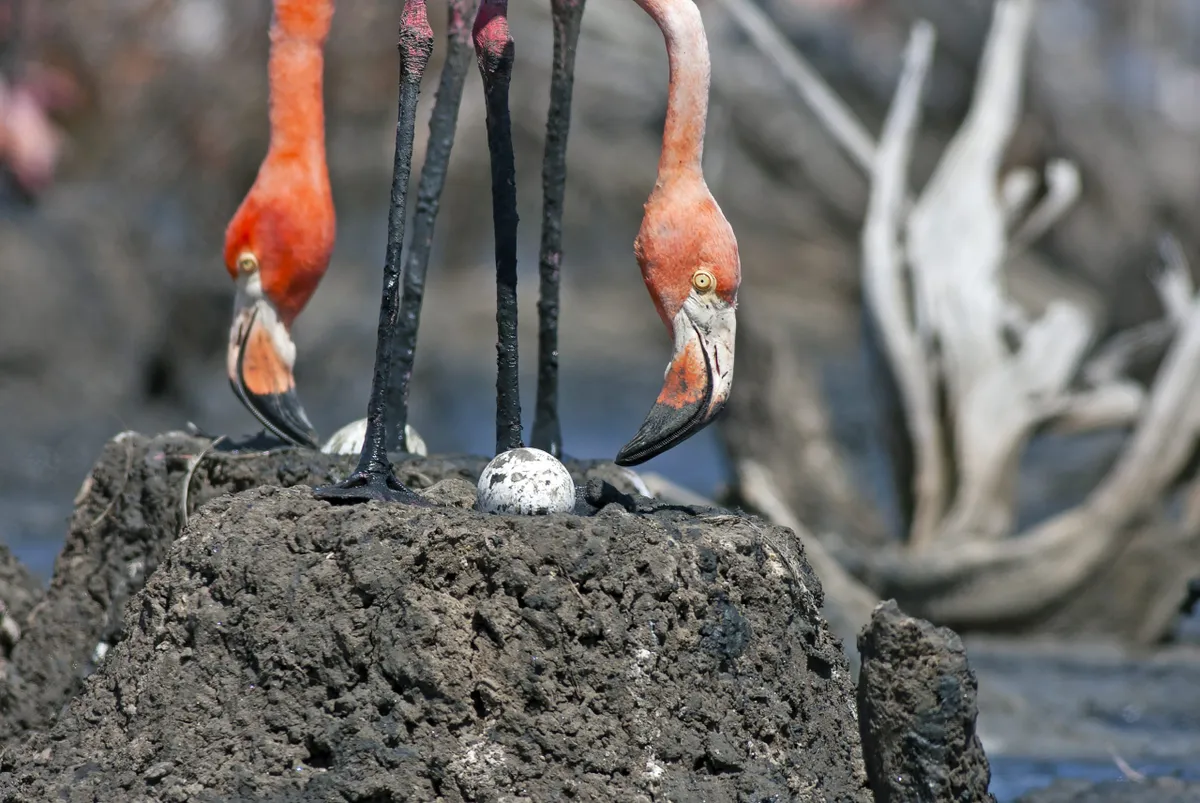
Though the pink coloration is most obvious in a flamingo’s plumage, the carotenoids spread a lot further. Flamingo skin is pink and flamingo blood is pink, but popular claims that flamingo eggs or even flamingo egg yolk is pink are completely untrue, and any photos showing it have been photoshopped.
What noise do flamingos make?
Flamingos are very noisy birds and communicate by honking loudly. They also make a growling and grunting noise in addition to a warning call when they feel threatened.
Why can flamingos detect rain?
Flamingos in Africa rely on the teeming life of freshwater and soda lakes, which they strain through the sieve-like structures in their bills. But many of the lakes on which they depend are ephemeral, prone to drying out almost completely.
But on the parched coast of Namibia, greater flamingos appear to know when the rains are due in the usually dry Etosha Pan that lies 500km away. How? It’s too far away to see lightning or hear thunder. It’s possible that the birds are sensitive to the minuscule drops in barometric pressure that signal oncoming rainfall.
But nobody knows if this is true, and, if it is, how they do it. Like the magnetic sense, the weather sense of flamingos and other birds is an enigma.
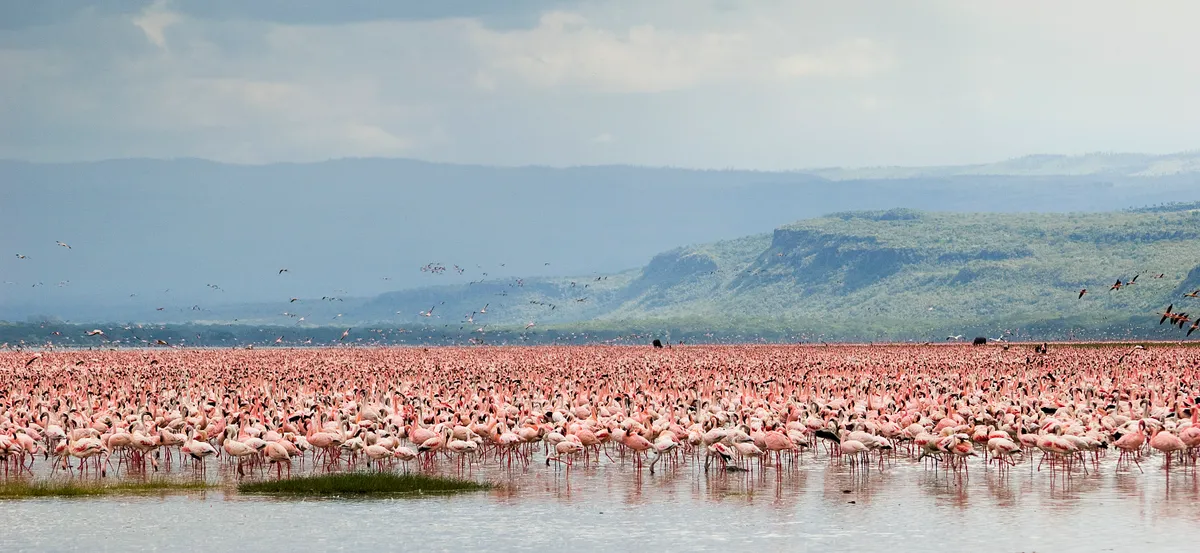
How do flamingos choose their partners?
Males and females perform a spectacular courtship dance to attract a mate. Once formed, flamingo pair bonds are mostly monogamous.

How do flamingos feed their young?
Flamingos are among a select few birds that feed their young directly from a secretion produced in their crop (throat), and this ‘crop milk’ is blood-red.

Interestingly, so much carotenoid is taken up by their crop milk that by the end of a breeding season parents of both sexes have lost the pink colouring from their feathers and appear almost white.
Scientists have found that the blood biochemistry of each of the six flamingo species varies, with different species seeking specific types of carotenoid. This accounts for the range of hues.
Where do flamingos nest?
Little grey baby flamingo chicks hatch atop a mud nest constructed by the adults and take up to three years to attain their full mature plumage. The flamingos become pink over time as their feathers are slowly dyed by the carotenoids in their diet.
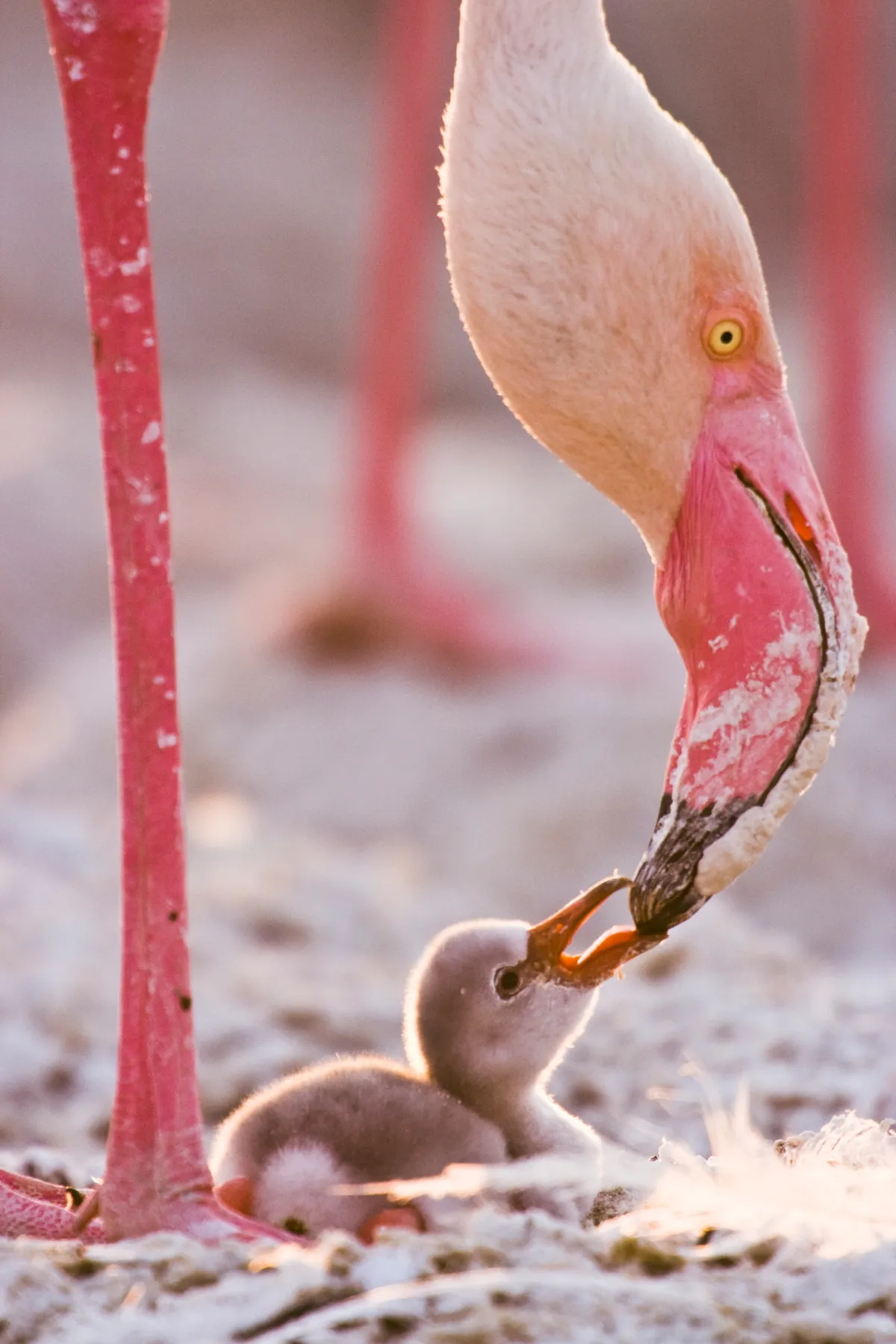
Why do flamingos bully each other?
A long-term research project by the Wildfowl and Wetlands Trust (WWT) at Slimbridge recorded individual flamingos in flocks ‘shoving’ another bird, rather than walking around it, in a deliberate and unprovoked action that hadn't previously been seen.
This surprising behaviour was seen in all six species of flamingo resident at the wetland centre, and one flamingo was even seen barging into another that was fast asleep on one leg.
Further research is needed into why the birds do this, as the puzzling behaviour doesn’t immediately seem to benefit the bird, especially as deliberate bumping uses more energy and risks injury. It's possible that barging is a way to enforce social hierarchy within the flock.
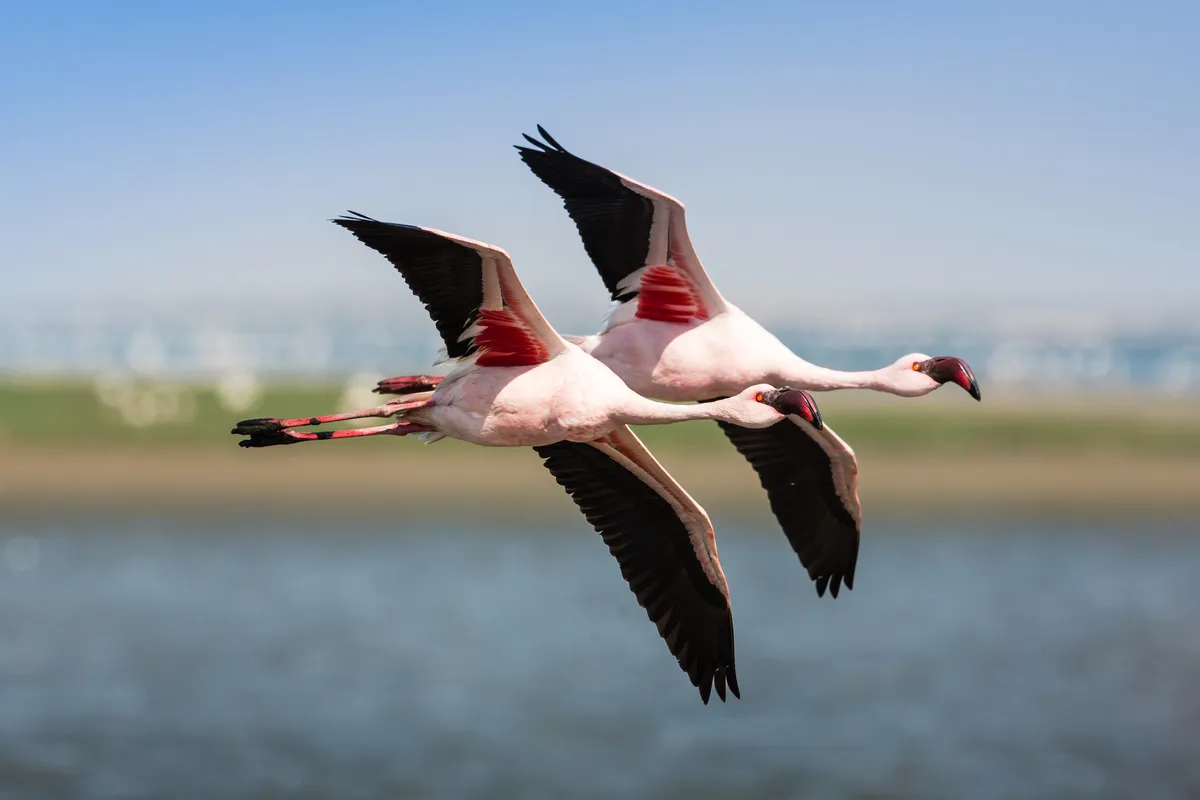
How long do flamingos live for?
Flamingos can live a long time - some individuals have been recorded at 70 years of age, giving them one of the longest lifespans in the bird world. In the wild, their biggest threats are predators like eagles and even baboons.






